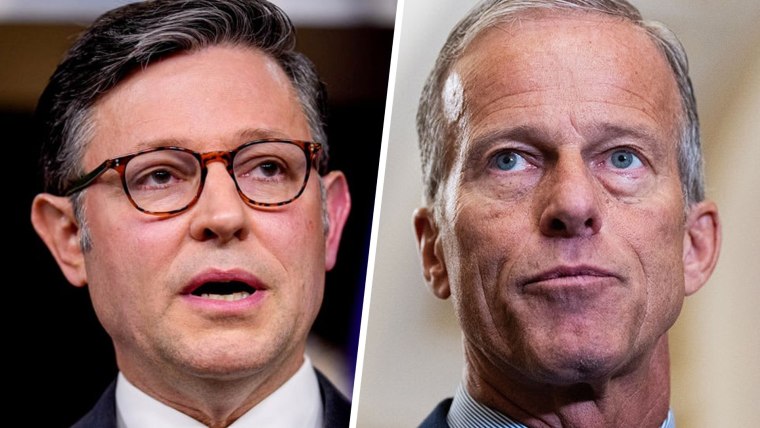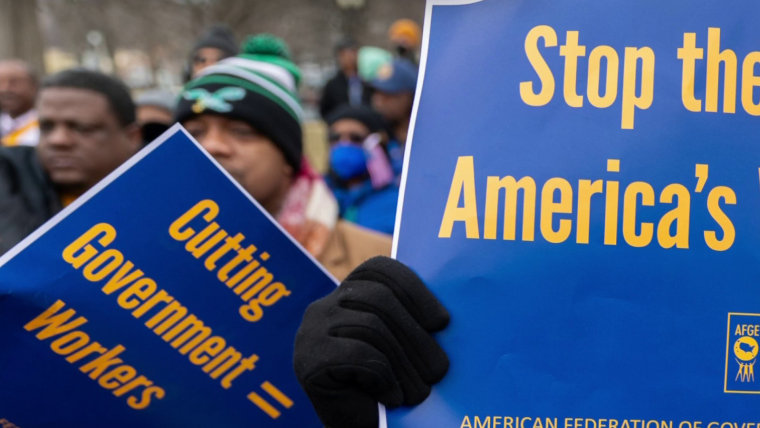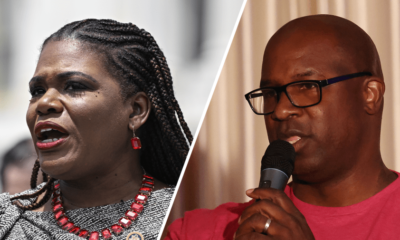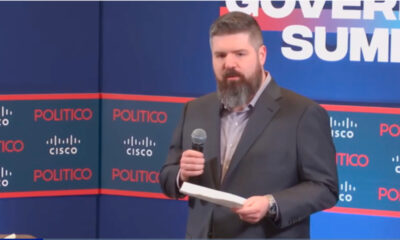The Dictatorship
East Wing of White House is gone. | Some of the history made there…

WASHINGTON (AP) — Betty Ford reportedly said that if the White House West Wing is the “mind” of the nation, then the East Wing — the traditional power center for first ladies — is the “heart.”
That “heart” beat for more than 100 years as first ladies and their teams worked from their East Wing offices on everything from stopping drug abuse and boosting literacy to beautifying and preserving the White House itself. It’s where they planned White House state dinners and brainstormed the elaborate themes that are a feature of the U.S. holiday season.
That history came to an end after wrecking crews tore down the wing’s two stories of offices and reception rooms last week. Gone is an in-house movie theater, and a covered walkway to the White House captured in so many photos over the years. An East Wing garden that was dedicated to Jacqueline Kennedy was also uprooted, photographs show.
Republican President Donald Trump ordered the demolition as part of his still-to-be approved plan to build a $300 million ballroom.
The former real estate developer has long been fixated on building a big White House ballroom. In 2010, he called a top adviser to Democratic President Barack Obama and offered to build one. Trump made no secret of his distaste for the practice of hosting elegant White House state dinners underneath tents on the South Lawn. The offer was not followed up on.
Now Trump, in his second term, is moving quickly to see his wish for what he calls a “great legacy project” become reality. He has tried to justify the East Wing tear-down and his ballroom plans by noting that some of his predecessors also added to the White House over the years.
First ladies and their staffs witnessed history in the East Wing, a “place of purpose and service,” said Anita McBride, who worked there as chief of staff to first lady Laura Bush.
“Tearing down those walls doesn’t diminish the significance of the work we accomplished there,” McBride told The Associated Press.
Construction workers, bottom right, atop the U.S. Treasury, watch watch as demolition continues on the East Wing of the White House to make room for a new ballroom, in Washington, Oct. 22, 2025. (AP Photo/Jacquelyn Martin)
Construction workers, bottom right, atop the U.S. Treasury, watch watch as demolition continues on the East Wing of the White House to make room for a new ballroom, in Washington, Oct. 22, 2025. (AP Photo/Jacquelyn Martin)
McBride said she supports a ballroom addition because the “large and expensive tent option” that has been used when guest lists stretched longer than could be comfortably accommodated inside the White House “was not sustainable.” Tents damage the lawn and require additional infrastructure to be brought in, such as outdoor bathrooms and trolleys to move people around, especially in bad weather, she said.
Others feel differently.
Krish O’Mara Vignarajah, who was policy director for first lady Michelle Obama, said the demolition was a “symbolic blow” to the East Wing’s legacy as a place where women made history.
“The East Wing was this physical space that had seen the role of the first lady evolve from a social hostess into a powerful advocate on a range of issues,” she said in an interview.
Here’s a look at some of the history that came out of the East Wing and the first ladies who spent time there:
Rosalynn Carter

Rosalynn Carter in her East Wing Office (Credit from Jimmy Carter Presidential Library)
Rosalynn Carter in her East Wing Office (Credit from Jimmy Carter Presidential Library)
She was the first first lady to have her own office in the East Wing. Most first ladies before Carter had worked out of the private living quarters on the second or third floor of the residence. Carter wanted a place where she could separate work and home.
“I always need a place to go that is private, where I don’t have to dress and don’t have to put on makeup,” she wrote in her memoir. “The offices of the staff of the first lady were always in the East Wing, and it seemed a perfect place for my office too.”
In her memoir, Carter wrote about her favorite route to her office in winter months. She walked through the basement, past laundry rooms and workshops and the bomb shelter kept for the president and his staff. The thermostats in the residence above had been turned down low because of President Jimmy Carter’s energy conservation program, making the East Wing so cold that she was forced to wear long underwear.
The subterranean passageway shown to her by a residence staffer provided some relief. “With Jimmy’s energy conservation program, it was the only really warm place in the White House, with large steam pipes running overhead,” the first lady wrote.
Nancy Reagan
Photos from the East Wing in the early 1980s show the first lady meeting with staff, including her press secretary, Sheila Tate. For a generation of Americans, Nancy Reagan was most closely associated with a single phrase, “Just Say No,” for the anti-drug abuse program she made a hallmark of her White House tenure.
As Reagan once recalled, the idea for the campaign emerged during a 1982 visit with schoolchildren in Oakland, California. “A little girl raised her hand and said, ‘Mrs. Reagan, what do you do if somebody offers you drugs?’ And I said, ‘Well, you just say no.’ And there it was born.”
Hillary Clinton
President Bill Clinton, flanked by Governors Ann Richards of Texas, left, and Mario Cuomo of New York, watches the Dallas Cowboys and Buffalo Bills play in the Super Bowl with his daughter Chelsea and their cat, Socks, in the White House, Jan. 31, 1993, in the family theater. (AP Photo/Wilfredo Lee, File)
President Bill Clinton, flanked by Governors Ann Richards of Texas, left, and Mario Cuomo of New York, watches the Dallas Cowboys and Buffalo Bills play in the Super Bowl with his daughter Chelsea and their cat, Socks, in the White House, Jan. 31, 1993, in the family theater. (AP Photo/Wilfredo Lee, File)
Clinton bucked history by becoming the first first lady to insist that her office be in the West Wing, not the East Wing. In her memoir, Clinton wrote that wanted her staff to be “integrated physically” with the president’s team. The first lady’s office relocated to what is now the Eisenhower Executive Office Building while Clinton was assigned an office on the second floor of the West Wing.
“This was another unprecedented event in White House history and quickly became fodder for late night comedians and political pundits,” Clinton later wrote.
Laura Bush
Bush wrote in her memoir about what it was like at the White House after the Sept. 11 attacks. Most of her staff members, then in their 20s, “kicked off their high heels and fled from the East Wing” after they were told to “run for their lives” when reports suggested the White House was a target.
Anita McBride, left, Chief of Staff to first lady Laura Bush, right, looks on as Bush makes opening remarks during a video teleconference in the Roosevelt Room of the White House in Washington, Dec. 10, 2007. (AP Photo/Charles Dharapak, File)
Anita McBride, left, Chief of Staff to first lady Laura Bush, right, looks on as Bush makes opening remarks during a video teleconference in the Roosevelt Room of the White House in Washington, Dec. 10, 2007. (AP Photo/Charles Dharapak, File)
“Now they were being asked to come back to work in a building that everyone considered a target and for a presidency and a country that would be at war,” she wrote.
Michelle Obama
Obama was the first Black woman to serve as first lady, becoming a global role model and style icon who advocated for improved child nutrition through her “Let’s Move” initiative. She and her staff in the East Wing also worked to support military families and promote higher education for girls in developing countries.
Photos from the time show Obama typing on a laptop during an online chat about school nutrition and the White House garden she created.
A large ribbon is displayed outside the East Wing of the White House during a preview of the 2016 holiday decor, Nov. 29, 2016, in Washington. (AP Photo/Andrew Harnik, File)
A large ribbon is displayed outside the East Wing of the White House during a preview of the 2016 holiday decor, Nov. 29, 2016, in Washington. (AP Photo/Andrew Harnik, File)
Melania Trump
Trump pushed the boundaries of serving as first lady by not living at the White House during the opening months of Donald Trump’s first term. She stayed in New York with their then-school-age son, Barron, so he wouldn’t have to switch schools midyear. When she eventually moved to the White House, she and her East Wing aides launched an initiative named, “Be Best,” to focus on child well-being, opioid abuse and online safety.
Invited guests play at the Jacqueline Kennedy Garden as part of a one year anniversary event for first lady Melania Trump’s Be Best initiative, May 7, 2019, at the White House in Washington. (AP Photo/Andrew Harnik, File)
Invited guests play at the Jacqueline Kennedy Garden as part of a one year anniversary event for first lady Melania Trump’s Be Best initiative, May 7, 2019, at the White House in Washington. (AP Photo/Andrew Harnik, File)
Jill Biden
Biden was the first first lady to continue a career outside the White House. The longtime community college English professor taught twice a week while serving as first lady. But in her East Wing work, she was an advocate for military families; her late father and her late son Beau served in the military. Biden also advocated for research into a cure for cancer and secured millions of dollars in federal funding for research into women’s health.
The Dictatorship
Courts are hampering Trump’s efforts to cancel funding approved by Congress

Congress has the constitutional power of the purse, but President Donald Trump’s robust assertion of executive authority is testing even that basic tenet of U.S. democracy.
His administration has already canceled or threatened to cancel billions of dollars of previously approved federal spending and now wants to go after even more funding during the government shutdown.
States, cities, nonprofits and other groups have responded with more than 150 lawsuits accusing the Republican administration of an unlawful power grab.
An Associated Press analysis shows that so far, those suits are mostly succeeding in blocking the Republican president’s spending moves, at least temporarily. But most of the legal battles are far from over, and the Supreme Court, where Trump so far has been more successfulcould have the final word on at least some of them.
The court’s conservative majority has been receptive at least in preliminary rulings to many emergency appeals from the administration. Legal experts say a pair of recent decisions by the court may bode well for the administration’s push to gain more control over government spending. Here’s a look at the current legal score and what could lie ahead:
Courts have mostly ruled against the administration so far
As of early October, court orders were at least temporarily blocking the Trump administration’s decisions in 66 of 152 lawsuits over federal spending, an AP analysis shows. In 37 of those cases, courts had allowed the administration to proceed. In 26 of the cases, a judge had yet to rule on the matter. The remaining 23 had either been dropped or consolidated.
The count reflects decisions by district courts, appeals courts and the U.S. Supreme Court and will almost certainly change as the cases progress.
The flurry of litigation reflects not only the administration’s aggressive effort to wrest control of spending, but the Republican-controlled Congress’ unwillingness to push back, said Zachary Price, a constitutional law professor at the University of California College of the Law, San Francisco.
“Congress seems to be following its partisan interests more than its institutional interests, and that puts a lot of pressure on courts,” he said.
It’s hard to say how much money the administration has withheld
Government watchdogs say the administration is blatantly ignoring a requirement in the 1974 Impoundment Control Act to report funding freezes to Congress.
Research by Democrats on the House and Senate Appropriations Committees estimated the administration was freezing, canceling or seeking to block a total of $410 billion as of early September. That’s equivalent to about 6% of the federal budget for the year that ended on Sept. 30.
The administration has disputed that number.
Since the shutdown started this month, the administration has targeted even more fundingprimarily in places represented by Democrats.
The Trump administration is taking a page from Nixon
Legal scholars say no president has attempted massive, unilateral cuts like these since Richard Nixon. The moves reflect an expansive view of executive power that is at odds with the Impoundment Control Act, court rulings and the Constitution, which grants Congress supremacy over spending, experts say.
“The power they’ve claimed is the power to delay and withhold funds throughout the year without input from Congress,” said Cerin Lindgrensavage, counsel with Protect Democracy, which is involved in multiple lawsuits against the administration. “That’s a theft of Congress’ power of the purse.”
In a message to Congress earlier this year, the White House said it was “committed to getting America’s fiscal house in order by cutting government spending that is woke, weaponized, and wasteful.”
White House budget director Russ Vought, a proponent of withholding federal funds, has argued presidents long had the power to spend less money than Congress appropriated if they could cut waste or be more efficient, and that power is needed to address the country’s massive debt.
The government shutdown opened up a new opportunity to cut spending, he said this month on “The Charlie Kirk Show.”
“If I can only work on saving money, then I’m going to do everything I can to look for opportunities to downsize in areas where this administration has thought, ‘This is our way towards a balanced budget.’”
The administration has cut entire agencies
The 152 cases the AP identified challenge the closure of government agencies and offices, the cancellation of grants and other assistance and the attachment of new conditions on federal funding.
The administration has used the cuts, or threat of cuts, to try to impose its policies on gender, raceimmigration and other issues.
But it’s not just money on the line. The funds supported jobs, school lunches, health programs, scientific research, infrastructure projects, foreign assistance, disaster preparedness, education initiatives and other programs.
Some notable rulings against the administration include the restoration of funding to 14 states that filed suit over nearly $2 billion withheld for electric car chargers and a block on potentially broad funding cuts to some of the country’s largest cities over their “sanctuary” immigration policies.
Judges have raised constitutional concerns
Judges who have ruled against the administration have often found strong reason to conclude the cuts, or threat of cuts, would violate the Constitution’s separation of powers by usurping Congress’ authority over spending.
They have also ruled the moves were most likely arbitrary under the Administrative Procedure Act, a law that governs the process by which federal agencies develop and issue regulations.
Judges who have sided with the administration have likened at least some of the legal claims before them to contract disputes that belong in a different court: the U.S. Court of Federal Claims.
That court, which traces its origins to the mid-1800s, handles lawsuits by citizens seeking money from the federal government. Referred to as “the People’s Court,” it is separate from the district courts that are handling most of the high-profile litigation against the administration.
The Supreme Court has often sided with the White House
The high court’s conservative justices have allowed the administration to move ahead for now with plans to shutter the Education Department, freeze $5 billion in foreign aid and cut hundreds of millions of dollars for teacher training and research supported by the National Institutes of Health.
Those decisions may make it harder to challenge the administration’s spending cuts, though the high court has not yet considered their ultimate legality or overturned lower court rulings.
In the National Institutes of Health case, the high court ruled 5-4 in August that lawsuits over the cancellation of grant funding generally cannot be handled entirely by federal district courts. Instead, plaintiffs must sue in federal claims court for any money and turn to the district courts if they want to challenge the guidance that led to the grant terminations.
The impact of the Supreme Court’s decision is still unfolding, but it could force plaintiffs in the grant funding cases to start over in a new courtroom. In some cases, plaintiffs might have to decide if they want to sue on two fronts.
In the foreign aid case, the Supreme Court in a 6-3 decision in September suggested the Impoundment Control Act did not give private parties the right to sue over so-called pocket rescissions.
That’s when the president submits a request to Congress not to spend approved money, but does it so late in the fiscal year that Congress doesn’t have time to act and the funds go unspent.
Trump notified House Speaker Mike Johnson in August of a pocket rescission for the $5 billion in congressionally approved foreign aideffectively cutting the budget without going through the legislative branch.
Though the Supreme Court stressed its decision was preliminary, legal experts say it could make it easier for the Trump administration to use the tactic again.
___
Associated Press writer Lindsay Whitehurst contributed to this report.
The Dictatorship
‘Deeply disturbing portrait of America’: Nicolle Wallace rips GOP over looming SNAP cutoff

Come Saturday, the 42 million Americans who depend on the Supplemental Nutrition Assistance Program, or SNAP, will be forced to go without benefits due to the ongoing government shutdown.
On Monday’s “Deadline: White House,” Nicolle Wallace placed the blame for the looming lapse entirely on the president and the Republican Party. “It is awful when anyone in America goes hungry, and it is a choice,” she said, “it’s Donald Trump’s choice.”
The BLN host noted this isn’t the first time the administration has slashed food assistance for some of America’s most vulnerable. In March, it cut approximately $500 million in aid for food banks.
“That $300 million that Donald Trump is spending on making a gold ballroom where the East Wing once stood, and the $230 million he’s trying to get us, the American taxpayers, to reimburse him for being under criminal investigation, they add up to roughly the same amount of money he has cut from America’s food banks,” Wallace said.
The BLN host called the split-screen of Trump’s White House renovations and the impending cuts “a deeply disturbing portrait of America,” adding, “the images of Donald Trump destroying —with an actual wrecking ball — the actual East Wing of the White House, while Americans are about to go without food stamps, is a snapshot of America that will live forever.”
Wallace also called out the president for pushing “policies that will hurt the parts of the coalition he used to publicly speak out for.”
“Food insecurity in America is a lot more common than anybody can imagine, and it knows no party affiliation,” she explained. “It does not care who you voted for, and the fact that Trump and all the Republicans in Congress are opting into this tragedy, this sort of shameful thing in America in 2025, should be front-page news all over the place.”
You can watch Wallace’s full analysis in the clip at the top of the page.
The Dictatorship
Lawmakers see the pain of the shutdown — and are digging in even harder

As the government shutdown reaches the monthlong milestone, both parties agree on two things: The pain is mounting, and that the other party should give in.
Republicans and Democrats widely acknowledge how the shutdown is hurting Americans. They see food benefits running outmore missed paychecks on the horizon and the prospect of low-income pregnant women, infants and children in the WIC assistance program not receiving aid.
But, thus far, the general reaction from lawmakers in both parties has been to argue that this latest pain point is just evidence that the other side needs to succumb to the demands of their party.
Republicans say the quickest way to address the escalating pain is to pass the GOP’s short-term spending bill that the House approved last month, which most Senate Democrats have shot down 13 times.

Ask a GOP lawmaker about, say, the approaching cliff for the Supplemental Nutrition Assistance Program, and they’ll agree it’s a major problem.
“It’s a serious issue, that’s 40 million Americans,” Sen. James Lankford, R-Okla., said. “It affects a lot of people, and my desire is to have this settled a month ago.”
But ask Lankford whether that SNAP cliff is affecting his thinking, and he’ll suggest “the only way” to fix the problem is for Democrats to support the Republican-continuing resolution.
“It’s the only vehicle that’s ready right now,” Lankford said.
Democrats say that proposal is a nonstarter — not because they disagree with anything in the bill, but because they want a fix to expiring Obamacare tax credits included in the legislation. Not extending those subsidies, Democrats warn, will cause health-care premiums to skyrocket for millions of Americans.
Every day that they get closer to the next pain point is to their disadvantage, and frankly, I think it exposes them to the wrath of what they consider to be their own base.”
Sen. Kevin Cramer, R-N.D.
But ask a Republican such as Sen. Kevin Cramer, R-N.D., whether open enrollment starting on Nov. 1 is an incentive for Republicans to start negotiating with Democrats, and he’ll tell you that it’s actually “a lot of incentive for Democrats to finally come to their senses and reopen the government so we can have that discussion.”
“Every day that they get closer to the next pain point is to their disadvantage, and frankly, I think it exposes them to the wrath of what they consider to be their own base,” Cramer said.
Democrats, of course, see it the other way. Senate Minority Leader Chuck Schumer, D-N.Y., said Tuesday afternoon he believes there will be “increased pressure” on Republicans to negotiate with Democrats once open enrollment begins.
But so far, that hasn’t happened — and the belief that President Donald Trump will come to the table once he sees the scope of the rising premiums may not bear out.
Democrats do, however, agree that the SNAP cliff is a big problem. From their perspective, that’s just all the more reason Republicans should work out a broader deal, with some Democrats taking offense to the suggestion that Republicans suddenly care more about food benefits than their party.
“This is the same party that cut billions of dollars from SNAP benefits in order to fund tax cuts for the ultra-wealthy,” Sen. Ruben Gallego, D-Ariz., told BLN, referring to the GOP reconciliation bill over the summer. “Now they are suddenly the protectors of people on SNAP benefits? It’s all BS.”
Gallego noted that, even if Congress approves funding, GOP lawmakers could claw the dollars back through rescissions — something Republicans have already done this year.
“I don’t trust them,” Gallego said.
Sen. Jeanne Shaheen, D-N.H., a moderate Democrat who broke with the majority of her party in March to support a GOP funding bill, agreed that Congress has to address SNAP running out of money. But she suggested that it shouldn’t come in lieu of Congress addressing the expiring Obamacare tax credits.
“We gotta be able to provide the SNAP benefits that people are entitled to, and the premium tax credits that will make health insurance affordable, and keep the government open,” Shaheen said.

The hardening of positions comes as the shutdown is on the brink of its fifth week, inching closer to breaking the current record for the longest shutdown in history: the 35-day lapse in funding of 2018-19.
During previous shutdowns, mounting pain was a key part of solving the impasses. The 2013 shutdown ended, in large part, because the U.S. was about to reach the debt limitand a major reason the 2018-19 shutdown ended was because air traffic controllers stayed home and grounded flights. But this time around, lawmakers are looking at the pain and suggesting it’s a key reason why the other side should relent.
There is hardly any inward reflection — and neither side is seeing much political blowback, with Americans narrowly blaming Republicans more than Democrats for the shutdown in polls.
“I believe both sides think they’re either winning or they’re not losing, and that’s not fertile ground for any change,” said Sen. Thom Tillis, R-N.C. “For another week or two.”
For a potentially record-breaking shutdown, the standoff has been marked by how little Republicans and Democrats are talking. The GOP position, in fact, is that they have nothing to discuss. Republicans say they will only talk about those expiring subsidies once the government is reopened. Democrats say that will leave Americans making health-care decisions with incomplete information.
Democrats think Americans should know what they’ll be paying for Obamacare before they’re forced to make those decisions during open enrollment, and they refuse to accept on blind faith that Republicans will extend subsidies in some form.
With those positions established — for Republicans, that there is nothing to discuss, and for Democrats, that the GOP has to come to the table — there’s been very little movement over the past month.

Even a statement from the American Federation of Government Employees, the largest union representing federal workers that has traditionally supported Democrats, did little to change the dynamic this week — even as AFGE called on Democrats to pass the Republican spending bill and stop “punishing the people who keep our nation running.”
Most Democrats were simply incredulous about the statement.
Sen. Tim Kaine, D-Va., noted that he works very closely with that union. “The AFGE would not want us to cut a deal and then have Trump fire a bunch of people next week,” Kaine said. “If we cut a deal and then he did that, they would come to us and say, ‘What the hell were you guys thinking?’”
When reporters asked Sen. Gary Peters, D-Mich., about the AFGE statement on Monday, he reiterated the general Democratic position: “I don’t like shutdowns.”
“I think we should never have a shutdown,” Peters said. “That’s why I hope Republicans would come with us and find common ground.”
When known asked Peters whether he agreed with AFGE’s position that the GOP funding bill should pass, he made it clear that Democrats still wanted a resolution on the Obamacare subsidies. “So I’m going to do that,” he said.
And then he succinctly summed up how lawmakers — and outside groups — seem to be talking past one another.
“I agree, we don’t want a shutdown,” Peters said. “We want to end the shutdown as quickly as possible, I totally agree with that.”
She covers Capitol Hill involving both Democrats and Republicans. She previously covered Congress at Blue Light News. She graduated from George Washington University’s School of Media and Public Affairs with a bachelor’s degree in journalism and mass communication and political science. She is a native New Yorker, Billy Joel’s No. 1fan and a Rubik’s Cube aficionado.
-
Uncategorized12 months ago
Bob Good to step down as Freedom Caucus chair this week
-

 Politics8 months ago
Politics8 months agoFormer ‘Squad’ members launching ‘Bowman and Bush’ YouTube show
-

 The Josh Fourrier Show12 months ago
The Josh Fourrier Show12 months agoDOOMSDAY: Trump won, now what?
-

 The Dictatorship8 months ago
The Dictatorship8 months agoPete Hegseth’s tenure at the Pentagon goes from bad to worse
-

 Politics8 months ago
Politics8 months agoBlue Light News’s Editorial Director Ryan Hutchins speaks at Blue Light News’s 2025 Governors Summit
-

 The Dictatorship9 months ago
The Dictatorship9 months agoLuigi Mangione acknowledges public support in first official statement since arrest
-

 Politics12 months ago
Politics12 months agoWhat 7 political experts will be watching at Tuesday’s debate
-

 Politics8 months ago
Politics8 months agoFormer Kentucky AG Daniel Cameron launches Senate bid





